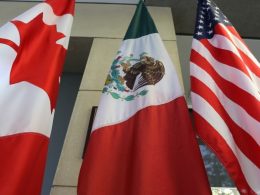Unlock the Editor’s Digest for free
Roula Khalaf, Editor of the FT, selects her favourite stories in this weekly newsletter.
Germany has signalled it will raise defence spending in line with US President Donald Trump’s request for Nato members to reach 5 per cent of GDP, as conservative chancellor Friedrich Merz vows to turn the Bundeswehr into Europe’s “strongest military”.
Speaking at a meeting in Antalya on Thursday, German foreign minister Johann Wadephul said Berlin was “following” Trump on his demand that Nato allies reach a 5 per cent goal. Currently the alliance has a 2 per cent spending target.
“We see this (request) as a clear commitment by the United States of America to Article 5”, Nato’s collective defence clause, Wadephul added.
But Wadephul also signalled that the way the country would meet the target would be by embracing a proposal by Nato secretary-general Mark Rutte.
The Dutchman has called for Nato members to reach 3.5 per cent of GDP on “hard military spending” by 2032, to which he has suggested adding 1.5 per cent of GDP on “related spending” including infrastructure and cyber security.
Rutte has argued that strengthened infrastructure needed to be part of overall security spending, and cited the example of bridges “to drive our cars, but also if necessary to make sure that the bridge will hold a tank. All these expenditures have to be taken into account”, he said.
The Rutte proposal is seen as a compromise that would enable Trump to claim a win at Nato’s leaders summit in The Hague next month.
Berlin is set to meet the 2 per cent target this year, after having relied heavily on the US for its protection over the past 80 years.
“When it comes to the core defence spending, we need to do much, much more,” Rutte reiterated to reporters in Antalya, adding that Russia could reconstitute its armed forces within 3-5 years.
Of Nato’s 32 members, just Poland is currently close to the 5 per cent target, while big economies including Italy and Spain are below the old target. The Italian government this week informed Nato it had reached 2 per cent, although it remains unclear what expenditures it included in the calculations.
Rutte said at the meeting on Thursday that all countries were striving to reach 2 per cent by next month. Poland and the Baltic states of Estonia, Latvia and Lithuania, who all border Russia, have pledged to go beyond the 5 per cent target.
US secretary of state Marco Rubio said that Nato was “only as strong as its weakest link, and we want no weak links”.
Germany has stepped up efforts after Merz’s Christian Democrats won parliamentary elections in February.
On the day of his party’s victory, Merz said Germany needed to “achieve independence” from the US. Like many in Germany, the staunch Atlanticist has been shaken by the hostile tone emanating from the White House since Trump’s election. The Trump administration was “largely indifferent to Europe’s fate”, Merz said at the time.
Merz managed to change the country’s constitution before taking office as chancellor to remove the borrowing cap for defence spending, vowing to invest hundreds of billions of euros into the Bundeswehr. He struck a deal with his coalition partners, the Social Democrats, to set up a €500bn fund to modernise the country’s ageing infrastructure.
In his first speech as chancellor to the Bundestag on Wednesday, Merz pledged to “provide all financial resources that the German Armed Forces need to become the strongest military in Europe in conventional terms”.
“Strength deters aggression; weakness invites aggression,” Merz said.
Additional reporting by Laura Pitel in Berlin and Amy Kazmin in Rome
Source link









